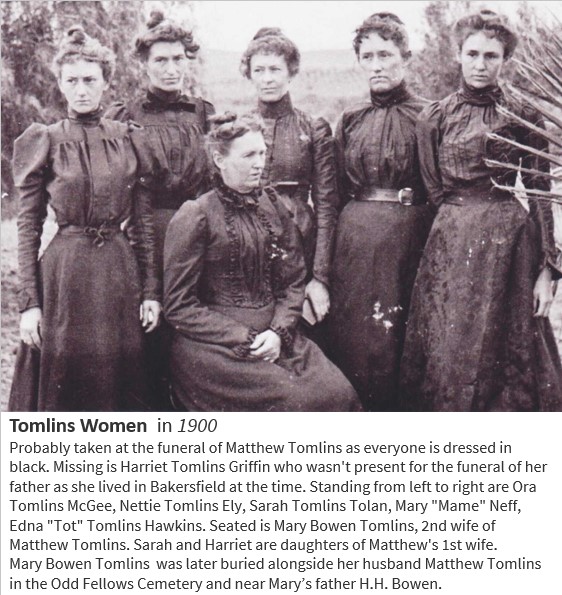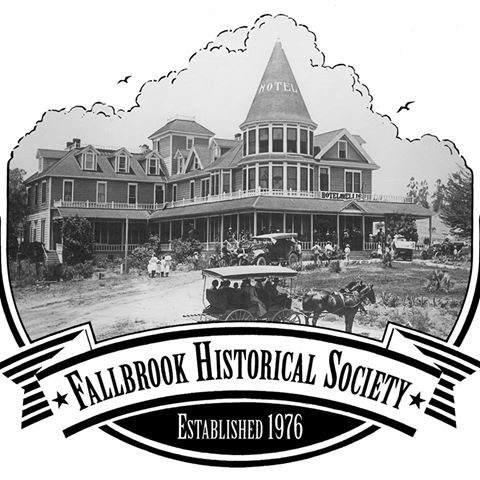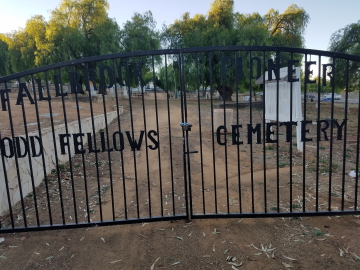The written history[1] of the Fallbrook Odd Fellows Cemetery has said that H.H. Bowen was the first burial at the Odd Fellows Cemetery in 1881. For years, we had no information as to who this person was. He was not mentioned in the records as a resident or as a settler. A new study by the Fallbrook Historical Society now identifies him as Henry Harrison Bowen, clarifies his circumstances, and casts doubt that he was the first burial in Odd Fellows. Henry Harrison Bowen was born in Herkimer County, New York in 1813. In later years he became well known to the earliest pioneers of Fallbrook and Moosa Valley. Bowen was a farmer, a blacksmith, and a ‘49er.
In 1850, after leaving his wife and four children with his wife’s family in New York to wait for his return, Bowen joins the Gold Rush to California with a covered wagon and 4 horses.
Crossing the plains that summer, Bowen’s horses died one by one from bad water or exhaustion. Bowen finally arrived in Sacramento on foot. He panned gold, but soon learned that he could make more money as a blacksmith sharpening picks and drills. He set up his blacksmith shop in Placerville ‘Hangtown’, CA. Bowen eventually sells his shop and returns home to his family with a nice profit. The family moves back to their Juliet, Illinois farm where Henry’s daughter Mary ’Kate’ Bowen meets and marries an English merchant named Matthew Tomlins in 1871. Twenty years in the future, the Tomlin Hotel will become the center of West Fallbrook.[2]
In 1876, Matthew Tomlins decides to take his young growing family to California where he has heard that there is good land to be homesteaded. Packing up their belongings, 100 pounds per person, the Tomlins family take the train all the way to San Diego. Grandpa Henry Bowen, a widower now, accompanies his daughter’s family for his return to California. Matthew Tomlins homesteads a tract in the remote Pamoosa Valley about 15 miles south of Fallbrook. He built a large home and barn, plus other buildings with lumber delivered from San Diego. Vital Reche, a neighbor in Live Oak Canyon operates a small resort of several cabins catering to tuberculosis or “consumption” patients who came to recuperate in California’s climate. Whenever Reche’s resort became full he referred guests to the Tomlins place in Pamoosa because they had plenty of room they would rent to guests.
More settlers were moving into the Pamoosa area. Mail had to come from the San Luis Rey post office 12 miles away. Matthew Tomlins filed an application to the government for a Pamoosa post office. The application was granted in 1881, but the government changed the name to Moosa because Pamoosa, a Native American word of obscure meaning, was too similar to the existing Pomona, Calif post office.[3] Tomlins was made the Moosa postmaster.
Tomlins’ daughter Nettie married William Ely of Fallbrook in 1886. William was the son of Charles P. Ely, one of the first settlers in Fallbrook and the builder of the Fallbrook Hotel, on the northwest corner of Main and Alvarado. Soon after his daughter’s marriage to young Ely, Matthew Tomlins buys the hotel from Charles Ely who retired to Oceanside. At the same time, Matthew Tomlins moved his family from Moosa to West Fallbrook. In 1897, another daughter Mary ‘Mamie’ Tomlins married Ben Neff, publisher of the town newspaper, the Fallbrook Enterprise.[4] Mamie is remembered in Fallbrook history for Vic Westfall’s comment about Mamie riding a man’s bicycle on Main Ave with her bloomers exposed.[5] It should be understood that Tomlins’ did not have older sons. His four daughters grew up tending the family ranch on horseback, including rounding up cattle. When the family moved into town, apparently the younger sister’s outgoing behavior shocked a few of the staid townsfolk. However, Mamie reportedly was a natural seamstress and opened a dress making and millinery shop next to her father’s hotel.

Grandpa H.H. Bowen had passed away in the early 1880s after a short illness. He was buried under an oak tree near the Moosa school house on a plot of land donated by Washington Irving, a nearby settler and nephew of the famous writer. Henry Bowen is the first burial in the Moosa cemetery.[6] Many years later it is discovered that Irving did not have legal title to this plot of land. The rightful owners requested that relatives remove their deceased to other cemeteries. The Tomlins sisters had their grandfather’s remains moved to the Tomlins plot in the Fallbrook Cemetery.[7] In the 1880s and 1890s this graveyard was called the Fallbrook Cemetery. It later became known as the Odd Fellows Cemetery in 1904 when the Odd Fellows Lodge purchased the property. Henry Bowen now rests just a few feet away from his daughter Mary and her husband Matthew Tomlins.

The exact date of Henry Harrison Bowen’s burial was unclear. His gravestone says he died in 1881, yet Nettie Tomlins’ memoir says her grandfather was initially interred in Moosa and years later had to be moved to Fallbrook. The death date on his grave marker would have been several years before he was actually re-interred in Fallbrook.

Because of these unusual circumstances, H.H. Bowen could not have been the first burial in the Odd Fellows. That dubious honor must now be given to Evaline Tracy. Evaline came west to California with her husband Emerson and their 2 daughters hoping the climate would help her recuperate from tuberculosis. However, she died soon after arriving and was buried in the new Fallbrook Cemetery in 1883.
Tom Frew,
Historian FHS
Footnotes:
[1] The Fallbrook Masonic Cemetery has custodial responsibility for the Odd Fellows cemetery and the cemetery website https://oddfellowscemetery.com/ relates the history as written about 1990 by Elizabeth Yamaguchi of the Fallbrook Historical Society. Yamaguchi relied on an inventory of the surviving head stones at the time and some accompanying notes.
[2] Manuscript ‘In The Year 1900, A Nickel Bought A Lot’ by Francis C. Van Velzer. Page 22 has a quotation from his brother G.F Van Velzer’s letter from West Fallbrook dated Sept 6, 1887 saying “Our town is three years old has two general merchandise stores, one hotel and stock subscribed for another (hotel) to cost $12, 000….” The 2nd hotel was to be the Francis E. Willard which opened in 1889. The Fallbrook Hotel was built in 1885 by Charles P. Ely, the same year that the West Fallbrook townsite was officially surveyed by San Diego County. Matthew Tomlins bought the Fallbrook Hotel in 1890. It became known as the Tomlin Hotel until it was torn down in 1910. Charles Ely retired to Oceanside.
[3]San Diego County Place Names A to Z; by Leland Fetzer, 2005
[4] 1900 U.S. Census lists Ben & Mamie Neff as being married for 3 years and now living in San Diego. Ben Neff had sold the Enterprise to Van Velzer and went to work for the San Diego Sun
[5] Fallbrook In Review vol.2 page 3. “Early Hotel” by Fallbrook Historical Society
[6] Memoir “The Lives of Four Sisters” by Nettie Tomlins Ely written in 1939
[7] ibid



